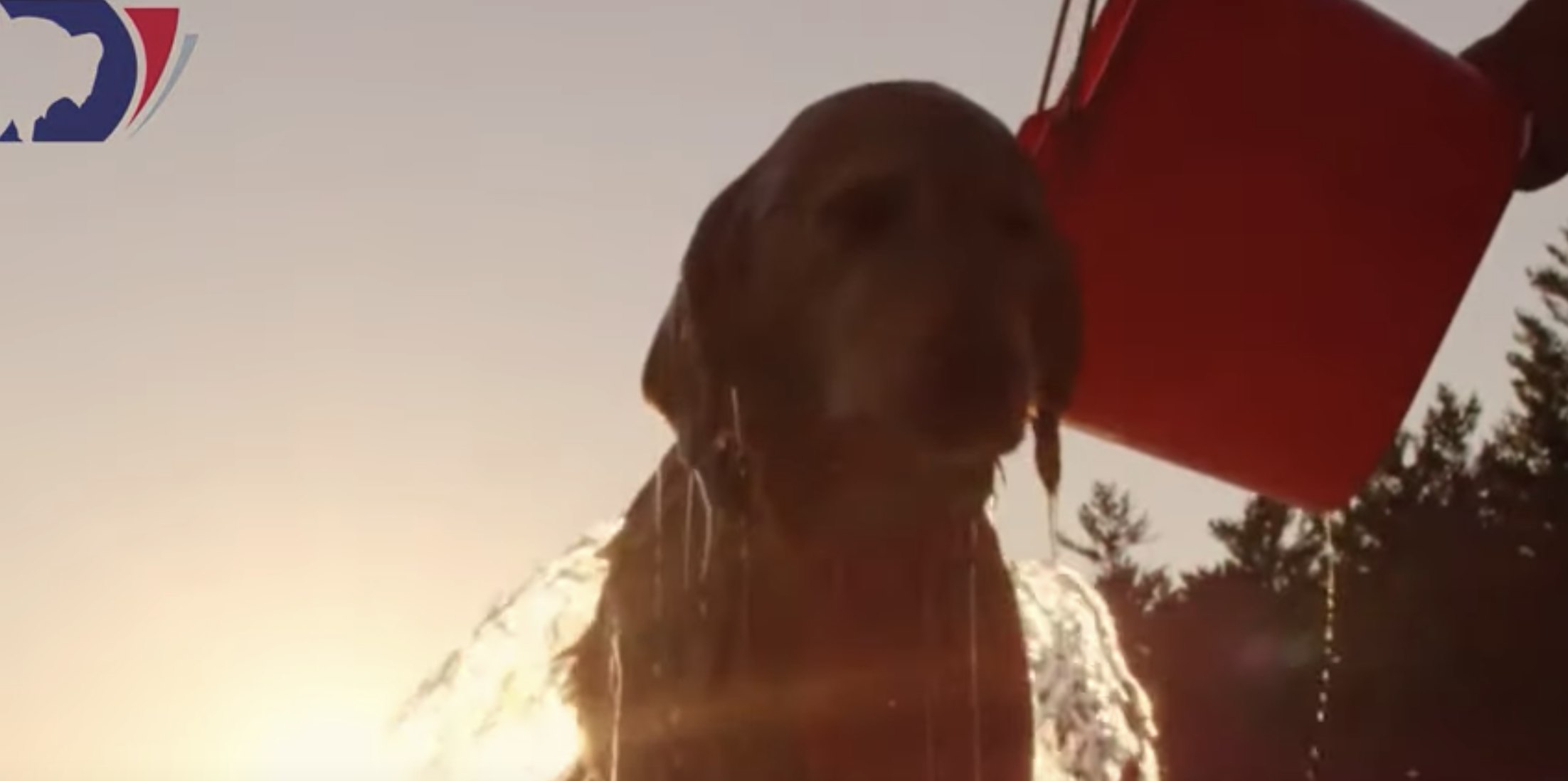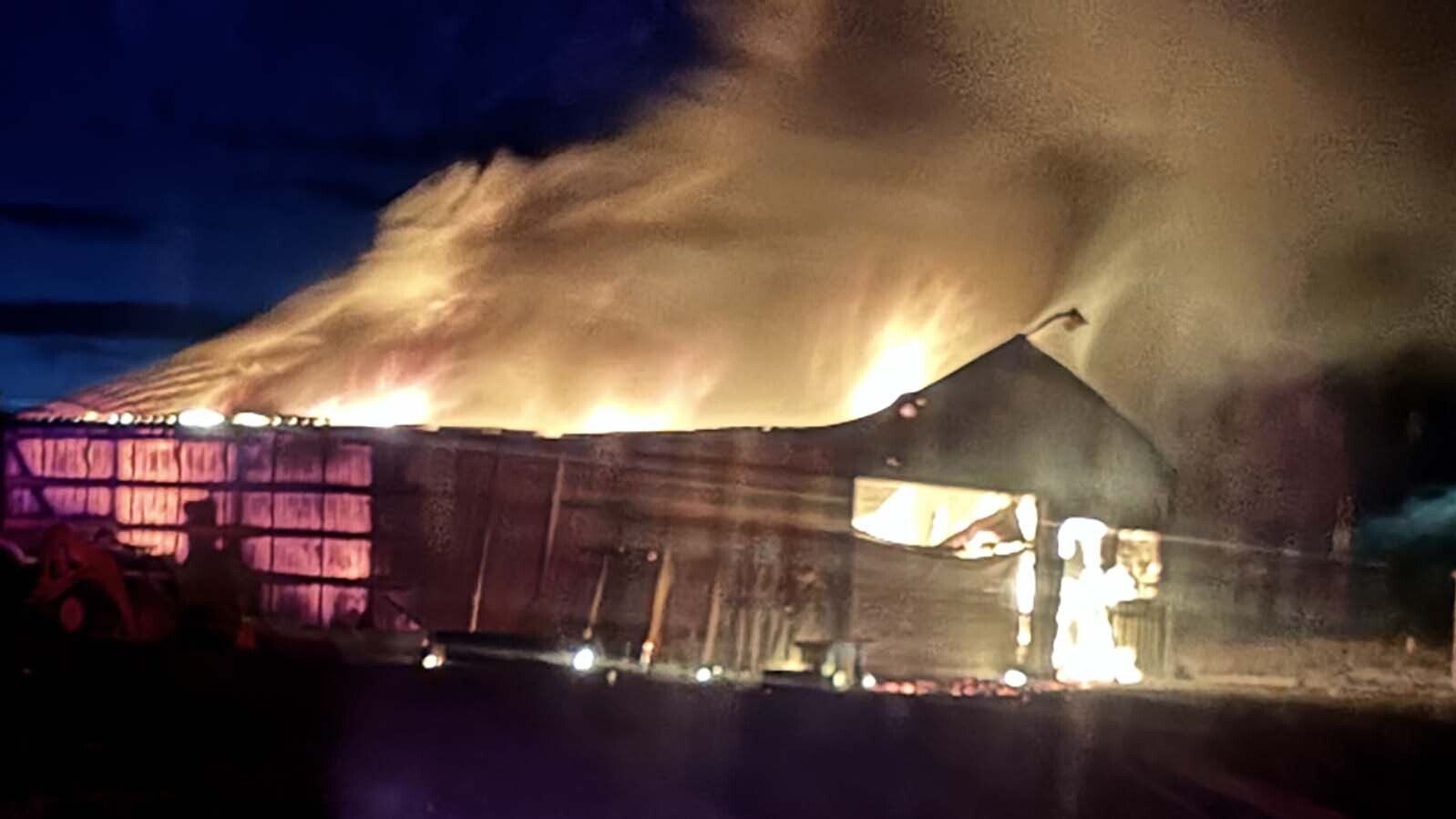State officials are urging pet owners to keep their dogs away from water where a toxic algae may be found.
Harmful Cyanobacteria Blooms or HCBs have been blamed for the deaths of dogs in Texas, Georgia and North Carolina. In each case, the dogs jumped into ponds or lakes containing blooms, also known as “Blue Algae,” and died within hours.
Blue Algae has been spotted in ponds and lakes around Wyoming and officials with the state Department of Health, Department of Environmental Quality and Livestock Board are urging people to stay out of water with the blooms.
The danger the algae poses for dogs is very high, said Dr. Karl Musgrave of the Wyoming Department of Health, and there are no known antidotes.
“The main toxin in this … bacteria produces a nerve toxin that actually paralyzes the lungs, the respiratory system,” he said. “So it acts really fast, within hours, and often there’s not much that can be done. If people do run into that situation, just try to get your pet to the veterinarian as soon as you can.”
The algae blooms typically occur during late summer to early fall and are most often found in still or slow-moving water. The blooms are generally blue or green and may look like grass clippings, scum, floating mats or spilled paint.
People who find themselves near the algae are warned by state officials not to swallow any water from around the bloom. The toxins cannot be removed by boiling, filtration or any other treatment.
Fish caught in the area of blooms should be thoroughly rinsed with clean water before they are eaten and then, only the filet of the fish should be consumed.
Pets or livestock should not be allowed to drink water near a bloom, eat the algae or lick their fur after contact. Any animal or human coming in contact with a bloom should be rinsed as soon as possible with clean water.
Algae blooms seen in Sweetwater County reservoir
The Wyoming Department of Health has issued a recreational use advisory for Eden Reservoir in Sweetwater County due to a harmful bloom of cyanobacteria, commonly known as “Blue-Green Algae”.
On Aug. 5, the Cyanobacteria Assessment Network (CyAN), a division of the Environmental Protection Agency, used satellite imagery to identify the HCB or Harmful Cyanobacterial Bloom, covering portions of the Eden Reservoir north of Farson.
The Wyoming Department of Environmental Quality collected water samples on Aug. 8 and found bacteria densities exceeding the recreational use threshold prescribed by Wyoming’s HCB Action Plan.
Eden Reservoir remains open during the recreational advisory, but the DEQ advises members of the public to check for posted warning signs because algae bloom conditions change frequently. Also, visitors are advised to keep pets and children away from affected areas.
For information about health effects and recreational use advisories, contact Dr. Karl Musgrave, State Environmental Health Epidemiologist and Public Health Veterinarian at the Wyoming Department of Health, at karl.musgrave@wyo.gov or (307) 777-5825.
Information on cyanobacteria sampling can be obtained from Michael Thomas, Natural Resource Analyst, Wyoming Department of Environmental Quality, at michael.thomas@wyo.gov or (307) 777-2073, or by contacting Lindsay Patterson, Surface Water Quality Standards Coordinator, Wyoming Department of Environmental Quality, at lindsay.patterson@wyo.gov or (307) 777-7079.
More information on HCBs can be found at,
Wyoming Department of Environmental Quality
www.wyohcbs.org/
Cyanobacteria Assessment Network (CyAN)
https://www.epa.gov/
water-research/cyanobacteria-assessment-network-cyan





